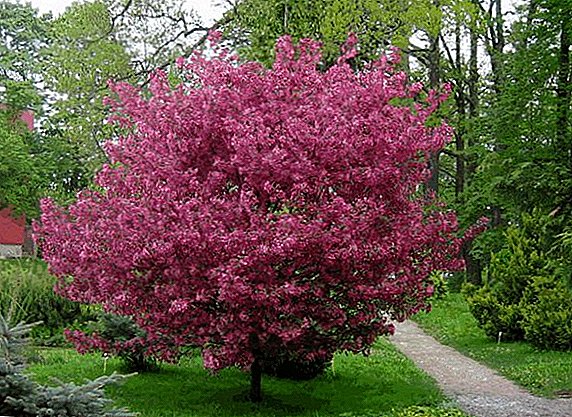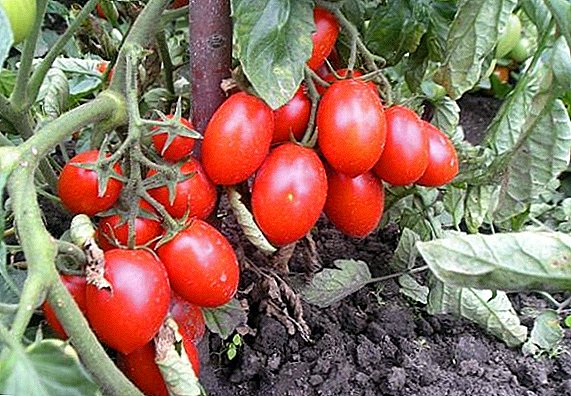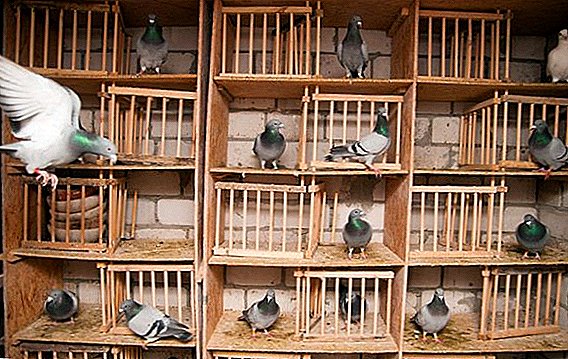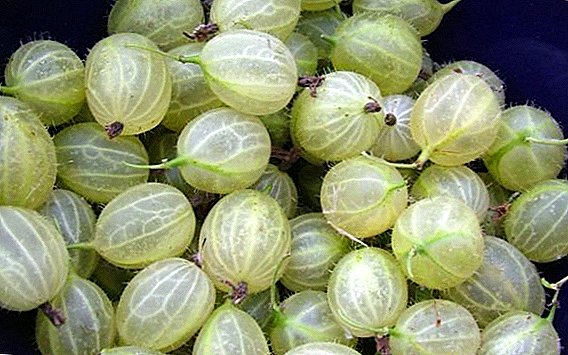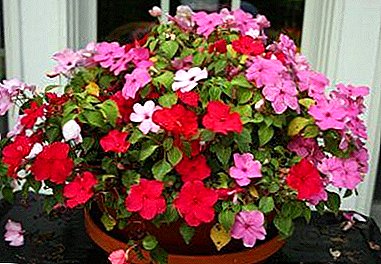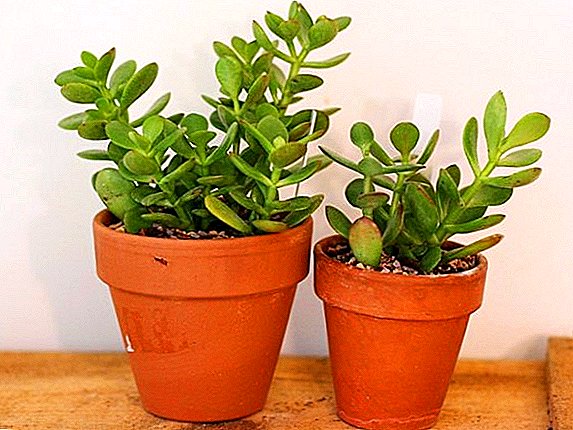 The fat woman, or crassula, is a genus of succulent plants of the family Crassulaceae, which unites about 350 species growing in Africa, Madagascar, and southern Arabia. Many Crassula species are grown as indoor plants and are widely popular under the name "money tree". Plants got this name because of the leaves, which in their form resemble coins.
The fat woman, or crassula, is a genus of succulent plants of the family Crassulaceae, which unites about 350 species growing in Africa, Madagascar, and southern Arabia. Many Crassula species are grown as indoor plants and are widely popular under the name "money tree". Plants got this name because of the leaves, which in their form resemble coins.
All representatives of Crassula are completely varied in their appearance, depending on the type and variety, but in all species of the money tree, the opposite arrangement of leaves on the stem and minimal dissection of the leaf plate remain. Jade flowers may have a different color, but are small in size and mostly in inflorescences of various shapes. The number of stamens corresponds to the number of petals.
Important! Fat leaves contain arsenic, so eating a plant is dangerous.
Consider what kind of jigsaw has species and varieties. The most common types of fat trees, which are grown in indoor conditions, can be divided into three groups: tree, ground cover (creeping) and columnar.
Tree Crassulas
This group combines types of fat girls with different names that are grown at home, in particular, to create bonsai.
Krassula ovata (C. ovata)
The kind of fatty ovoid (or oval) from South Africa is a shrub plant up to 1.8 m high. The leaves are thick, numerous, have the ability to retain a large amount of moisture. Their shape is wedge-shaped, the surface is shiny, sometimes it may acquire a reddish edging. Stems lignify over time and turn brown. Flowering plant in autumn and winter. The flowers are small, star-shaped and white-pink color. The plant can withstand temperatures not lower than nine degrees and short-term weak frosts. All varieties of fatty ovoid vary in size or shade of leaf blade.  The surface of the leaves can be covered with bright spots, for which the Crassula oval is sometimes called Crassula Silver. Often also found the name "portulakovaya"; it is characterized by the presence of aerial roots on a tree stalk. At home, the plant is unpretentious. It loves a lot of light and discreet watering. Flowering directly depends on the illumination of the plant. With a lack of light loses its decorative ability.
The surface of the leaves can be covered with bright spots, for which the Crassula oval is sometimes called Crassula Silver. Often also found the name "portulakovaya"; it is characterized by the presence of aerial roots on a tree stalk. At home, the plant is unpretentious. It loves a lot of light and discreet watering. Flowering directly depends on the illumination of the plant. With a lack of light loses its decorative ability.
Did you know? Crassula is believed to form around yourself stable energy atmosphere. While she is in the house, his happiness will not leave. It clears the house of negative energy, creates a good mood, clears thoughts.
Common varieties:
- "Crosby's Compact" - slow-growing plant with oblong small leaves only 1.5 cm long and up to 1 cm wide, dark green in color, framed on the edge with a red border. The young trunk is fleshy, green in color, but over time it becomes woody. This variety is often used in mini-gardens due to its miniature size.
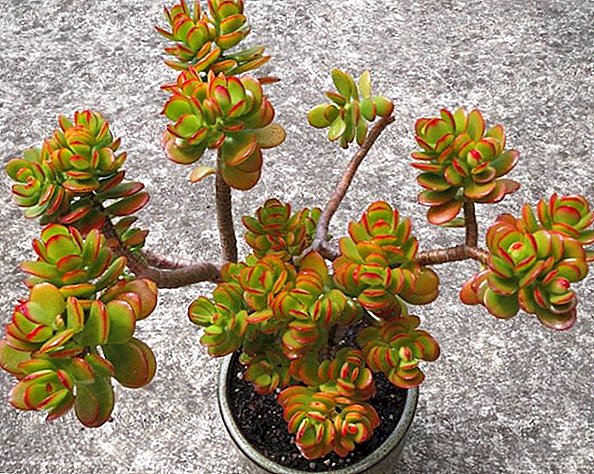
- "Hobbit" - hybrid variety bred in the 70s of the twentieth century. in the United States of America by crossing an Ovata brisket and a bollard colony (C. Lactea) Differs in the original form of a sheet plate. It is turned out and accreted from the base to the middle. The edges of some leaves may be slightly colored red.
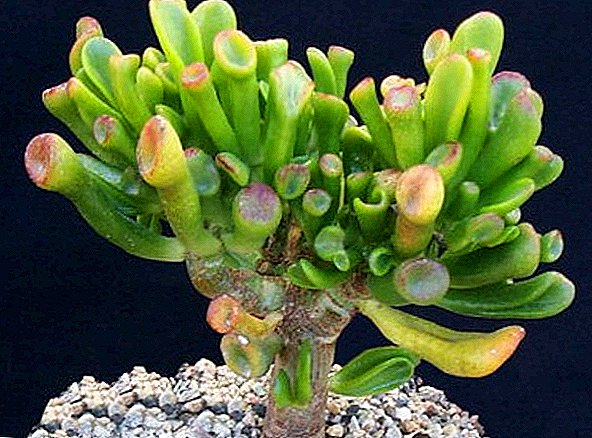
- "Hummel's Sunset" - A distinctive feature of this variety is the color of foliage. Leaf blades have white or yellow stripes with a pronounced red border. To the decorative colors of the foliage has not lost its attractiveness, the plant must provide bright intense light. If there is not enough light, then Crassula changes the color of the foliage to green.
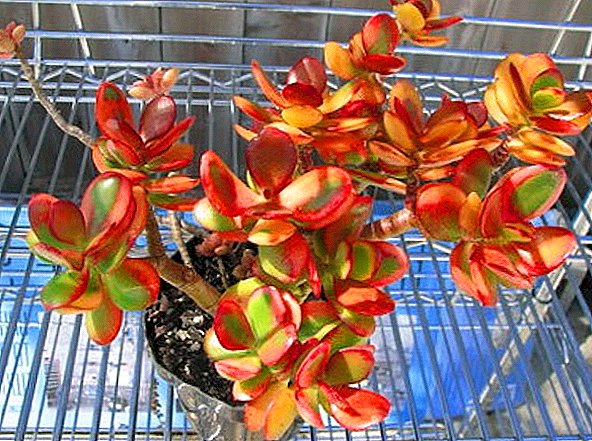
One form of crassula ovata is crassula shape (c. Ovata var. Obliqua). This form differs in that it has pointed triangular leaf blades of a larger size than that of a regular oval fatty woman. The leaf on each side is bent down, its tip is raised. The most famous are two variegated varieties Crassula shape:
- "Tricolor" - A plant with white stripes and a bright red border around the leaf blade. A clear number and location of the bands is missing. When green shoots appear, it is necessary to remove them, since the plant may lose its decorative variegation.
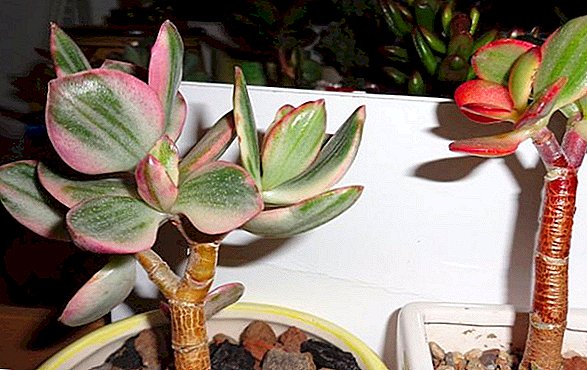
- "Solana" - a variety similar to the previous one, but with bright yellow stripes.
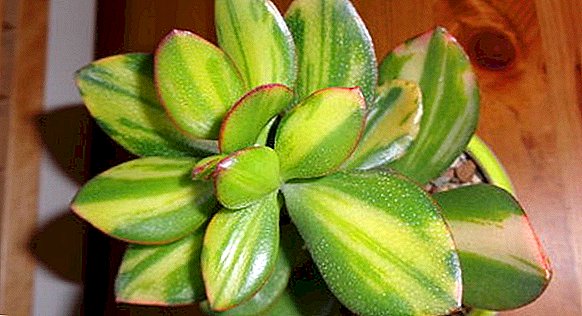
Important! As it grows, the crassula tree needs to be formed. It is necessary to pluck the buds that grow between pairs of leaves. 2-3 new buds will appear in this place, and the tree will branch. Pinching should be done on 3-4 paired leaves.
Crassula treelike (C. arborescens)
Refers to larger species. The leaves are covered with dark specks, have an almost round shape. Leaf blades have a green-blue color, a red border at the top and a reddish tint at the bottom. Their size is up to 7 cm in length and 5 cm in width. The tree at home can grow up to 1.5 m tall. In comparison with Crassula Ovata, Crassula Treelike is more picky in its care. The plant requires good lighting and proper watering without waterlogging. The varieties of Crassula tree include forms with the following names:
- Krassula undulatifolia (C. arborescens undulatifolia) - distinctive features of the plant are narrow, up to 3 cm, leaves with a silver-blue shade. There are varieties with red trim and white stripes on the leaf plates.
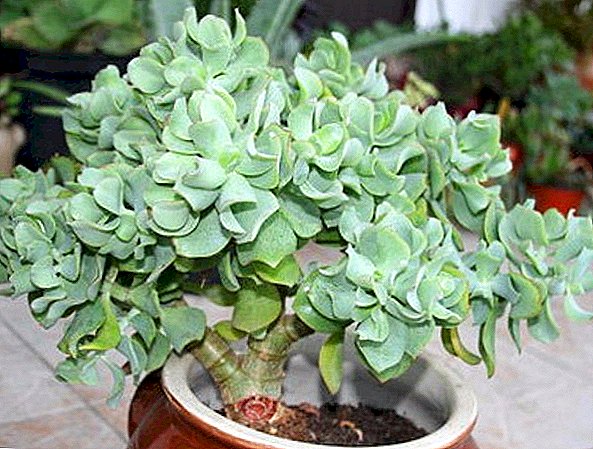
- Crassula Curly (C. arborescens curviflora) - got its name due to large wavy leaf plates.

Ground cover (creeping) Crassulas
Less common group krassul in home floriculture are creeping fatty woman. Their stems are thin, lodged, quickly grow and cover the soil with a carpet. Often used as an ampelous plant.
Crassula Ply-shaped (C. lycopodioides)
The plyadyanka plasuvidnaya has the form of a small shrub not more than 25 cm high with fleshy tetrahedral creeping shoots, the tops of which are slightly raised. In appearance it resembles a moan, therefore it received such a name. Leaves in the form of small scales are folded in four rows and fit snugly to the trunk and to each other. With intense light, they acquire a reddish tint. The plant is not demanding to care, makes a little shading and has several varieties that differ in the structure of the bush, bearberry leaves and have their own names.  One of the forms is a fatty lobloplauniform, whose characteristic features are more curved stems than those of Crassula are plasiform, and leaves less pressed to the stalk. The stem plates are more spread and may have a variegated, silver and yellow color, depending on the type of Crassula.
One of the forms is a fatty lobloplauniform, whose characteristic features are more curved stems than those of Crassula are plasiform, and leaves less pressed to the stalk. The stem plates are more spread and may have a variegated, silver and yellow color, depending on the type of Crassula.
Crassula tetrahedral (C. tetralix)
The creeping view of crassulum with a pointed leaf shape up to 4 cm in length and 0.4 cm thick. In form, the leaves are styloid, fleshy, placed at a short distance from each other throughout the stalk. 
Important! Crassula root system is small, so the pots should be used low. In the pot must be a layer of drainage.
Crassula Point (C. picturata)
The plant is distinguished by its decorative. It has lodging, strongly branching shoots. Sheet size 1.5 cm in length and 0.8 cm in width. The green surface of the leaves is covered with red dots, and on the reverse side - purple-red. Along the edges are placed thin transparent cilia. 
Colony-shaped crassula
A group of fat girls with an unusual pictorial structure was called the columnar crassules. The leaves of the plant grow together with their base and cover the stem, creating an effect as if strung on it. Plants are unpretentious and look great in the compositions.
Did you know? Crassula leaves secrete biologically active components that have a positive effect on the human body and have a bactericidal effect.
Crassula perforated (hollowed) (C. perforata)
A small plant has diamond-shaped leaves, which are located in pairs and cover the stem. The arrangement of the leaves is cruciform. Stem hard, not very branched. The leaves have a light green color with a bluish bloom and a red border around the edge. The length of the trunk is up to 20 cm, and the diameter of the trunk with leaves is about 3 cm. There are varieties in which the young leaves have yellow stripes, and the older ones, at the bottom of the trunk, are completely green. 
Krassula collected (group) (C. socialis)
Low-growing plant with thin, highly branched stems, on which are densely leafy sockets. The leaves are small, up to 5 mm long, smooth, flat, have a rounded shape. Their color is bluish-green. Along the edge of the leaf blade are thin cilia. The plant grows well, forming a dense pillow. 
Crassula broadleaf (rock) (C. rupestris)
A tall plant has creeping or erect branches up to 0.6 m in height. The leaves are dense, smooth, diamond-shaped, up to 2.5 cm long and 1-2 cm wide. The leaves are placed crosswise and have a green color with a blue tint. The top of the sheet may have reddish stripes.  As you can see, the fatty - not a boring houseplant. A variety of types and varieties of "money tree" is amazing and just will not leave indifferent any grower.
As you can see, the fatty - not a boring houseplant. A variety of types and varieties of "money tree" is amazing and just will not leave indifferent any grower.









